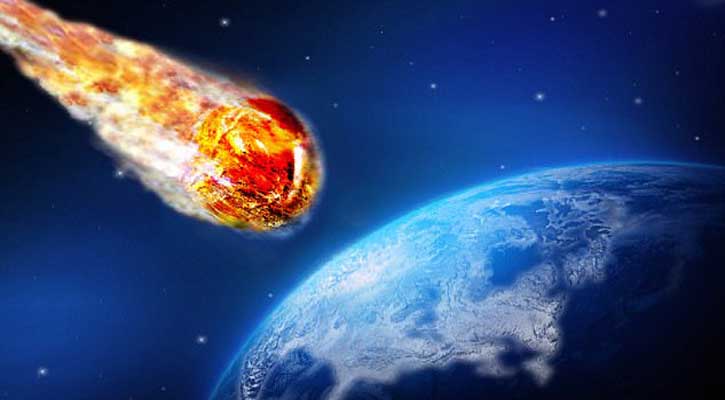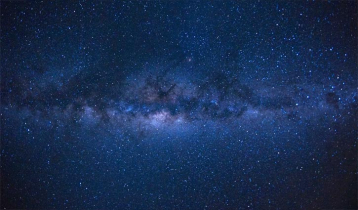More than 20 death stars heading towards our solar system
4 || risingbd.com

Risingbd Desk: Within the next million years or so, between 19 and 24 'death stars' will come within 3.26 light years of the sun.
This is close enough to deflect comets away from there original paths and towards Earth - increasing the chance that one will wipe out life on our planet.
This is according to a new paper that has looked at how often stars stray into the Oort cloud - a spherical shell of billions of icy objects that exist in the outer reaches of our solar system.
A particularly close encounter of one star, dubbed Gliese 710, in 1.3 million years' time, stands out.
It is predicted to pass within just 2.3 trillion km or about 16,000 Earth–sun distances, well within the Oort Cloud.
If this occurs, the strong gravitational force of the star, which has a mass 60 per cent that of our sun, could cause a shower of comets to switch course and target our planet.
Although some will drift into space and others will be absorbed by the sun and other planets, astronomers have warned a significant impact with Earth is entirely possible.
A further 490 to 600 stars will pass the sun within a distance of 16.3 light years within the next million years, the paper claims.
The latest calculations of 'death stars' comes from movements of more than 300,000 stars surveyed by ESA's Gaia satellite.
As the solar system moves through the Galaxy, and as other stars move on their own paths, close encounters are inevitable – though 'close' still means many trillions of miles.
A star, depending on its mass and speed, would need to get within about 37 trillion miles (60 trillion kilometres) before it starts to have an effect on the solar system's distant reservoir of comets, the Oort Cloud, which is thought to extend out to 15 trillion kilometres from the sun, 100,000 times the sun–Earth distance.
For comparison, the outermost planet Neptune orbits at an average distance of about 2.7 billion miles (4.5 billion kilometres), or 30 sun–Earth distances.
Understanding the past and future motions of stars is a key goal of Gaia as it collects precise data on stellar positions and motions over its five-year mission.
After 14 months, the first catalogue of more than a billion stars was recently released, which included the distances and the motions across the sky for more than two million stars.
By combining the new results with existing information, astronomers began a detailed, large-scale search for stars passing close to our sun.
So far, the motions relative to the sun of more than 300,000 stars have been traced through the Galaxy and their closest approach determined for up to five million years in the past and future.
Between 490 and 600 stars will pass the sun within a distance of 16.3 light-years (5 parsecs, or less.
Between 19 and 24 stars will pass at 3.26 light-years (1 parsec) or less.
Esa highlighted Gliese 710 as the most notable, but says there's no need to worry about a pending apocalypse.
Gliese 710 isn't scheduled to have its near miss with our solar system for another 1.35 million years.
Part of the Sepens Cauda constellation, Gliese 710 currently sits some 64 light-years away.
It is travelling in our direction though, and is expected to come within 1.2 trillion miles of Earth.
Although a significant distance, this is still close in space terms - Alpha Centauri, currently the closest star to Earth beyond our sun is some 25.67 trillion miles away.
The consequences of this passing star are so big it has been deemed one of the biggest threats over the next 10 million years.
Astronomers are hoping to extend their search deep into the past in an attemp to find out might be responsible for the demise of the dinosaurs, 66 million years ago.
'Potentially you could imagine tracing the orbit back 66 million years and identifying whether there was any star that came close to the sun and postulating whether that ejected a comet,' said Bailer-Jones.
Source: The Mail
risingbd/Sept 1, 2017/Mukul
risingbd.com





































